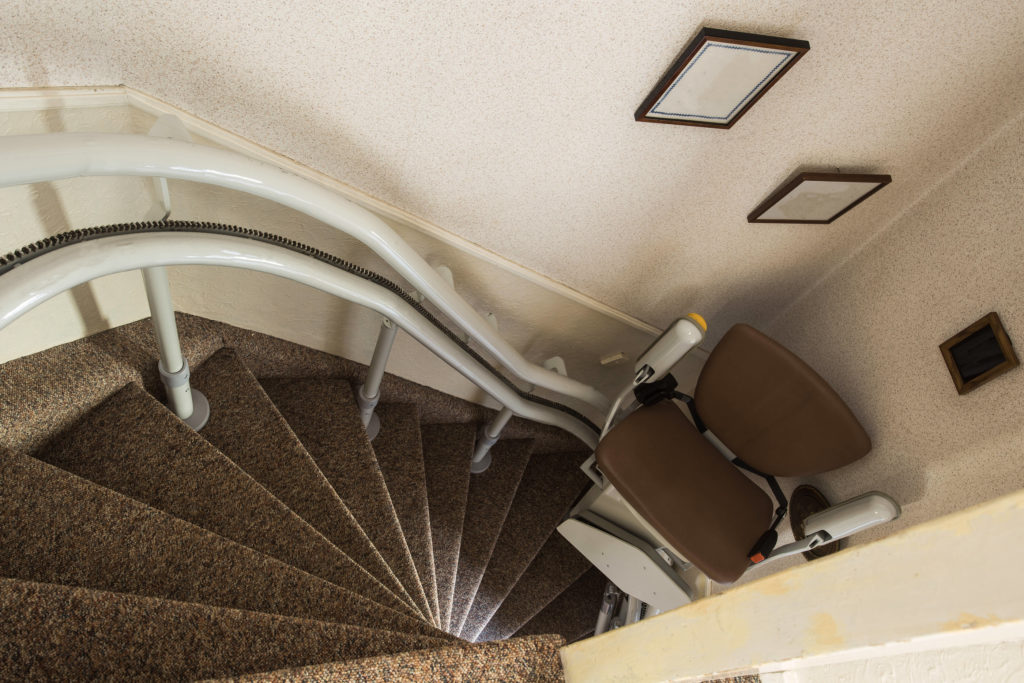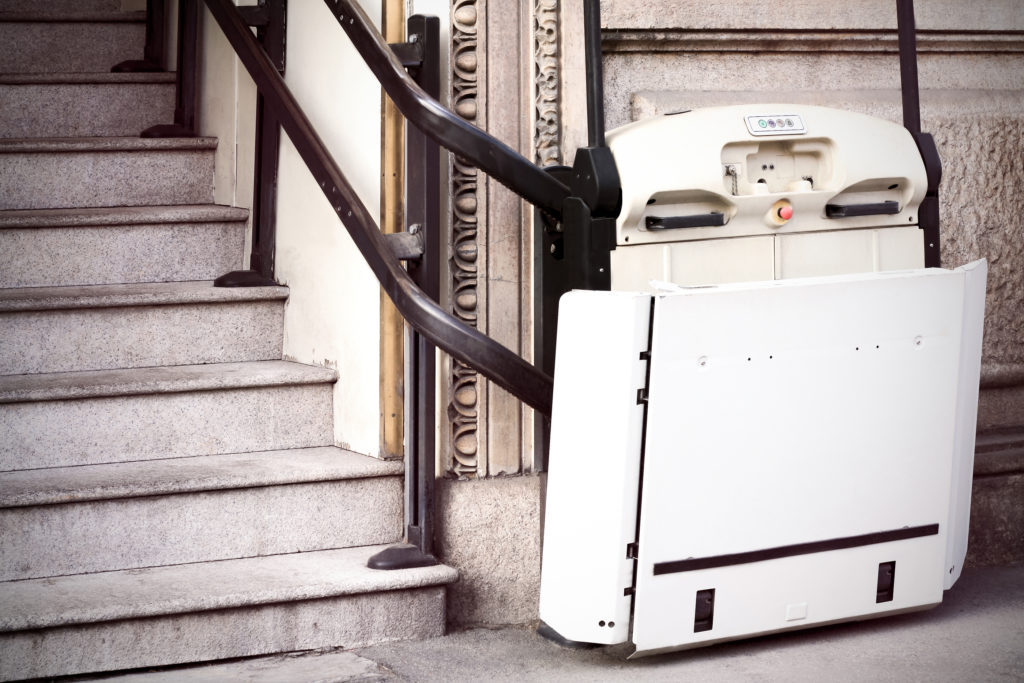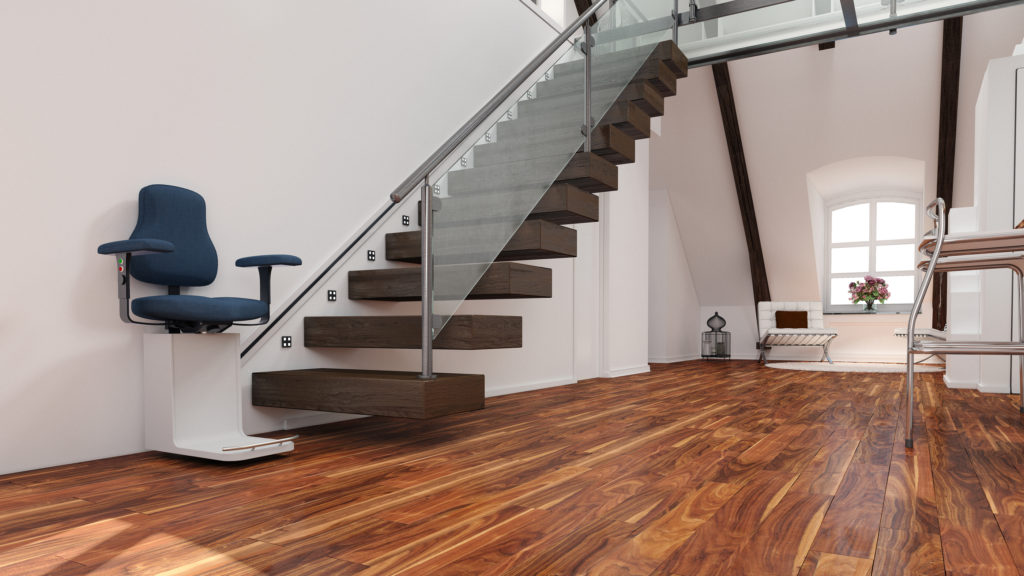The History of the Stairlift and Its Development
Monday, June 3rd, 2019, 8:40 pm , Posted by MED +
Stair lifts are commonplace today. But it wasn’t always this way. In the past, they were only available for commercial purposes or for wealthy individuals. Fortunately for many, stair lifts have become a common mobility device found in homes across Canada.
Stairs are a natural barrier for anyone with a mobility issue. Older adults, people with injuries and poor health, all have significant issues getting up and down the stairs. Stairs can be difficult to climb and they can be a dangerous falling hazard.
Stairs are particularly challenging for those who require the use of a wheelchair or walker. As a result, important research is being conducted today to find better and more effective stairlift solutions. One such study was conducted by the Canadian Institutes of Health Research (CIHR).
In a paper titled, Development of an integrated staircase lift for home access, the authors summarized why stair lifts are such an important mobility support device:
“Stairways into buildings have been reported amongst the most challenging environmental barriers for users of wheeled mobility devices. Further, older adults have identified stair climbing as the activity most requiring assistive devices. The significance of this problem should not be underestimated.”
Here we will outline the history of the stair lift and its interesting development over the years.
The History of The Stair Lift
Many people would not assume something like a stair lift would have an interesting history. However, it’s rooted in history, popular culture, and its development over the years has helped countless people gain more accessibility and mobility in their home.
The origins of the stair lift date back much further than most realize and it has historical significance.

The “Stairthrone”
The first documented use of a stair lift style device dates back to the mid-1500s. It’s believed that King Henry VIII of England was the first to use a stair lift (referred to as the stairthrone) to get up and down the stairs of Whitehall Palace.
After a jousting injury at the age of 44, and because of his overweight stature, his servants developed a block and tackle system to life the king up and down the 20-foot staircase.
The First Commercial Stair Lift
The first iteration of the modern stairlift as we know it today was invented by C.C. Crispen in the 1920s. The invention was called the inclinator and it was designed to help his ill friend get up and down the stairs. It had a folding chair, footrest and used a roller and tracks to move up and down. Much of the original design elements developed by Crispen are still used in modern designs.
Stair lifts In Popular Culture
Stair lifts have also gained notoriety in pop culture in a comedic manner including the 1984 movie Gremlins and even an episode of Seinfeld.
Pastairlifts.com provides an account of how stair lifts have been used on screen:
“In the 1984 horror/comedy Gremlins, the title characters dispatch Mrs. Deagle — the film’s Scrooge-like villain — by tampering with her stair chair, which flies up her staircase and out the window.”
“During the final season of Seinfeld, the episode “The Butter Shave” featured a plotline involving George Costanza faking a disability at work. Among his “perks” is using the stair chair at the office.”

The Modern Stair Lift
Modern stairlifts continue to better utilize new technology and innovation to improve upon previous designs. Today, you can get stair lifts for stair, curved, and even outdoor staircases. They also have innovative safety features to prevent falls and to make transitioning on and off the lift as simple as possible.
Stair lift prototypes have even been developed for pets.
Continued Research And The Future Of The Stair Lift
Research and development of stair lifts continue. As part of research conducted by Development of an integrated staircase lift for home access, the main objective of the work they are doing is to create a more inclusive home assess solution that integrates a lift and staircase into a single unit.
They recognize that some current stair lift models for entering and exiting the home still present some challenges and have introduced the ARISE design.
ARISE uses a design where the entire staircase structure moves, allowing it to function as both a normal staircase and a lift for wheelchair users. The design allows the lift to be accessible at all times from the top and bottom of the stairs and stair tread rise is consistent with building codes.
While there is potential, a number of limitations also exist. The authors conclude:
“Overall, stakeholders expressed enthusiasm for the ARISE. In particular, stakeholders noted the advantages of universal design and inclusivity, as well as potential benefits with the aesthetics of the solution. However, limitations were also noted. The complexity of the device was likely the most considerable challenge as users felt this would impact both the cost and reliability of the solution.”
The stair lift has been around for almost 500 years. It’s gone through many iterations and will continue to do so in the future. New technology, design concepts, and research offer a bright future for stair lifts.
Browse Blog Topics
- MED+ Partners with Holmes on Homes: Building a Legacy
- 7 Reasons Why a Hospital Bed Could Be a Good Investment for Improved Home Care of a Loved One
- 8 Ways to Make a Home Wheelchair Accessible
- Walkers vs. Rollators: Which is Right for You?
- 5 Ways MED+ Works with Occupational Therapists to Enhance Mobility & Accessibility for Patients





